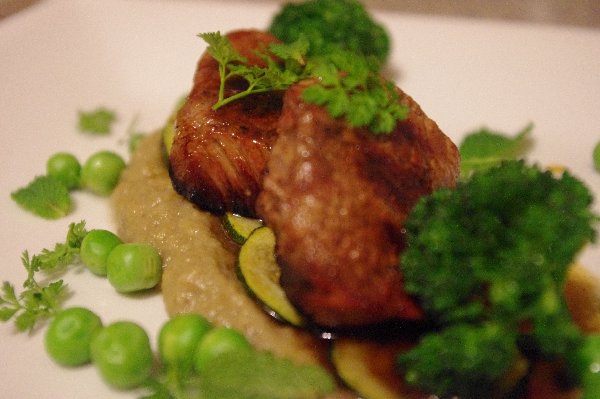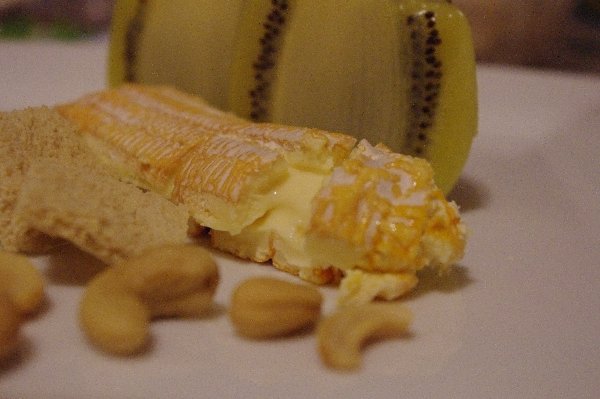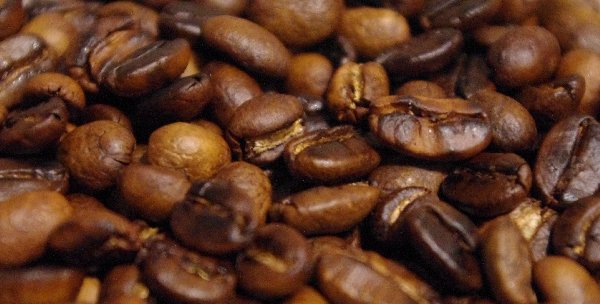Starter
The Tapanappa Pinot Noir 2010 from Parawa, Fleurieu Peninsula, South Australia, had a nice nose of very dark cherry, some dry brown leaves, a touch spice (cinnamon-like). I’d like to see more texture on the palate (which was also a higher acid style and a little short) but this has pleasant flavours (with enough interest). Good for the price, and without meaning to damn with faint praise, would present well as a “lunch wine”.
These are eight year old Dijon clone vines that are close-planted (1.5 m by 1.5 m) on a north-facing slope of sandy loam and clay overlying a laterite at 350 m above sea level. Even if this “only” received 1283°C days over the growing season, it still smells like “sweet” ripe fruit – so much for “cool climate” Australia. Looking at the final analysis, the slightly disjointed acidity makes sense: a TA of 5.8 g/l (as tartaric) with a pH of 3.65 is just too much (highly buffered) acid IMO – but perhaps my palate just isn’t Aussie enough? ![]() .
.
Lamb, Med and spring veg
Lamb: BBQed eye of rib.
Eggplant/aubergine: baked with soy sauce and tarragon-flavoured white wine vinegar, puréed with a little yoghurt.
Zucchini: sautéed in butter with marjoram.
Brocollini and peas: blanched.
Jus: mire poix-dominant, lamb rack and herb (thyme, bay) reduction.
Chervil and mint.
The brocollini was a little out of place. The lamb/eggplant/zucchini/marjoram/chervil/jus combinations worked very well.
Not a bad combo with a Henschke Cyril Henschke Cabernet Sauvignon 1999 from Eden Valley, South Australia. It’s 70% Cab Sauv, 15% Merlot and 15% Cab Franc and smells of very pure ripe, sweet blackcurrant, polish, a touch of tar and wild spearmint. It is well integrated, even if the acid is verging on the high side, and feels more elegantly structured than many of it’s SA cousins (as the rep goes) even if it does lack length. Easy drinking but not particularly interesting and I still have trouble with the value for money (even at new-release prices).
Cheese
The kiwifruit was poached in white wine, sugar and lemon juice from immediately after the syrup had been taken off the heat. This resulted in the fruit’s flavour being completely altered to something akin to plum or greengauge – not something I’d do again, but interesting.
Citrus sorbet
Orange, mandarin, grapefruit. The madarin adds a background even if its unique flavour is drowned out.
Sulawesi coffee
The 2009 Sulawesi Toraja again (a wet processed bean with screen size 17/18 and grade GR 1), but here roasted a little further into second crack.
I used to like the idea of a heterogeneous roast yielding flavour complexity (because of the broadened flavour spectrum) but now I’m thinking the pro roasters might have more reason than consistency in aiming for a homogeneous roast: the slight burn here bothers me.
Nevertheless, this was very robust in the cup (and therefore great as an after dinner coffee), with masses of dark chocolatey cocoa flavour, almost golden syrup-like dark sugar, and some rainforest floor with a slightly animally note.




